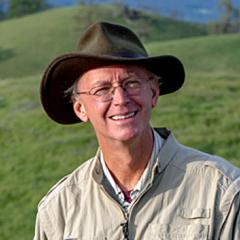Sustainability crisis: Santa Cruz County’s natural areas tourism
Editor's note: The following guest commentary first appeared in the Santa Cruz Sentinel.
Santa Cruz County residents have done a fair job of preserving nature and building a tourist economy, but the sustainability of nature tourism is at crisis point. Twenty percent of Santa Cruz County is parkland with a wealth of different public and private open space management agencies. This allows us to enjoy healthy wildlife populations, increased property values, recreational open space, and clean surface and groundwater. The more than 8 million tourists that visit Santa Cruz County each year are important economically — bringing jobs and tax revenue to our community — and yet, each of the three realms of sustainability — social, economic, and environmental — are facing strain. There is an urgent need for action.
Socially, parks users and parks neighbors are facing a crisis of expectations. Parks visitors do not find expected amenities: few restrooms, little interpretation, degraded and dangerous trails, and parks in an overall state of neglect. Natural areas around us are quickly changing with jammed parking areas, increased traffic, conflicting trail uses, and trash, graffiti, emergency response, and noise issues becoming more and more intense. Longtime residents are adjusting their lives to avoid interactions with crowded tourist weekends. Open space neighbors are more frequently picking up trash and calling law enforcement or emergency responders.
Economically, we don’t have an understanding of the costs and benefits of open space users on our local economy. Certainly, many businesses embrace maximizing tourism to improve their profits. But, nature tourism tax revenue doesn’t seem to be enough to maintain park amenities and hasn’t increased either trash or restroom services. We grimly consider how many more tourism-related accidents our emergency services can accommodate before negatively impacting response time for residents. Parks budgets have not kept up with increased demand for interpretation, enforcement, trail management, or stewardship activities; local tourist taxes see little allocation to our community’s natural attractions, and parks entrance fees are insufficient in the rare cases that they are collected.
Ecologically, our area is rich with globally-significant treasures all threatened by increased use. Our wildlife predator community – a key indicator of ecological health – is only holding its own because of a historical legacy of large areas with fewer human impacts. Mountain lions, badger, ringtail, bobcat, coyote, and fox all each requires careful planning to ensure sufficient habitat and that human use of those habitats does not disrupt them. Poorly planned and increased visitation also threatens rare and endangered birds, fish, and amphibians. As species become more endangered, regulatory burdens increase and future generations face a diminished world.
How do we create a more sustainable future for natural areas visitation in Santa Cruz County? First and foremost, there must be a more comprehensive natural areas visitation plan across the landscape. Such a plan would address all of the social, economic, and ecological issues raised above. There are at least 15 entities operating in various levels of natural areas management isolation. Each time one entity proposes a new public access plan, there would be benefit from a more holistic analysis including a sustainable regional natural areas visitor use plan.
Finally, there are two other important elements to create more sustainable public open space access: scientific rigor and public accountability. Public access managers are not able to adapt their management to social, economic, or ecological thresholds without good data; without good data, much will be lost. And, without a means for the public to hold them accountable, public access managers will be unable to comply with their civic agreements. Both of these elements require advocates strong enough to support public access managers’ decisions to reduce use as necessary and until data exist to support any level of access. And critically, public engagement in, and support of, natural areas management must be fostered through regular public reporting including the convening of community meetings where there is evidence of both the standing of and responsiveness to our community.
